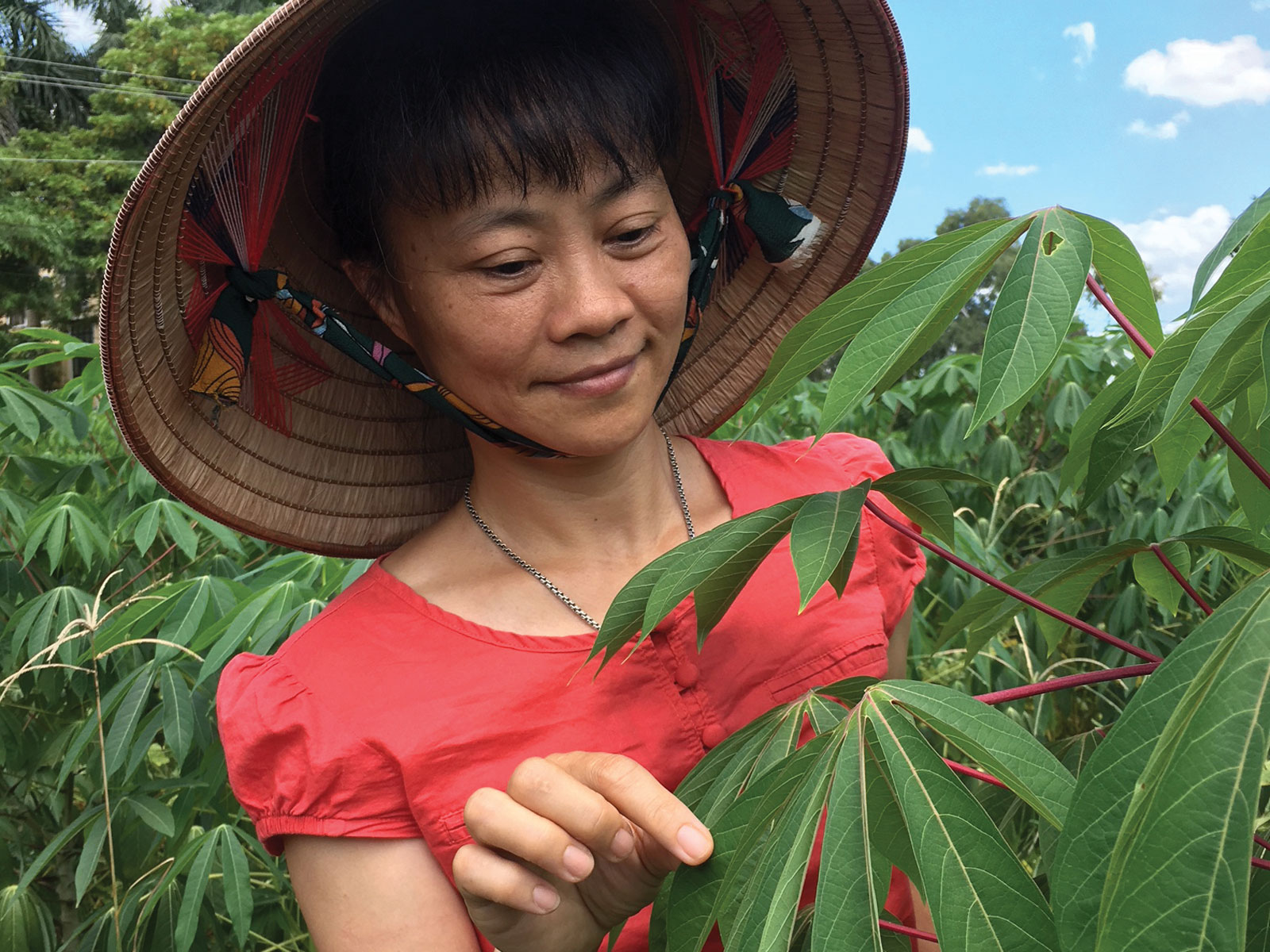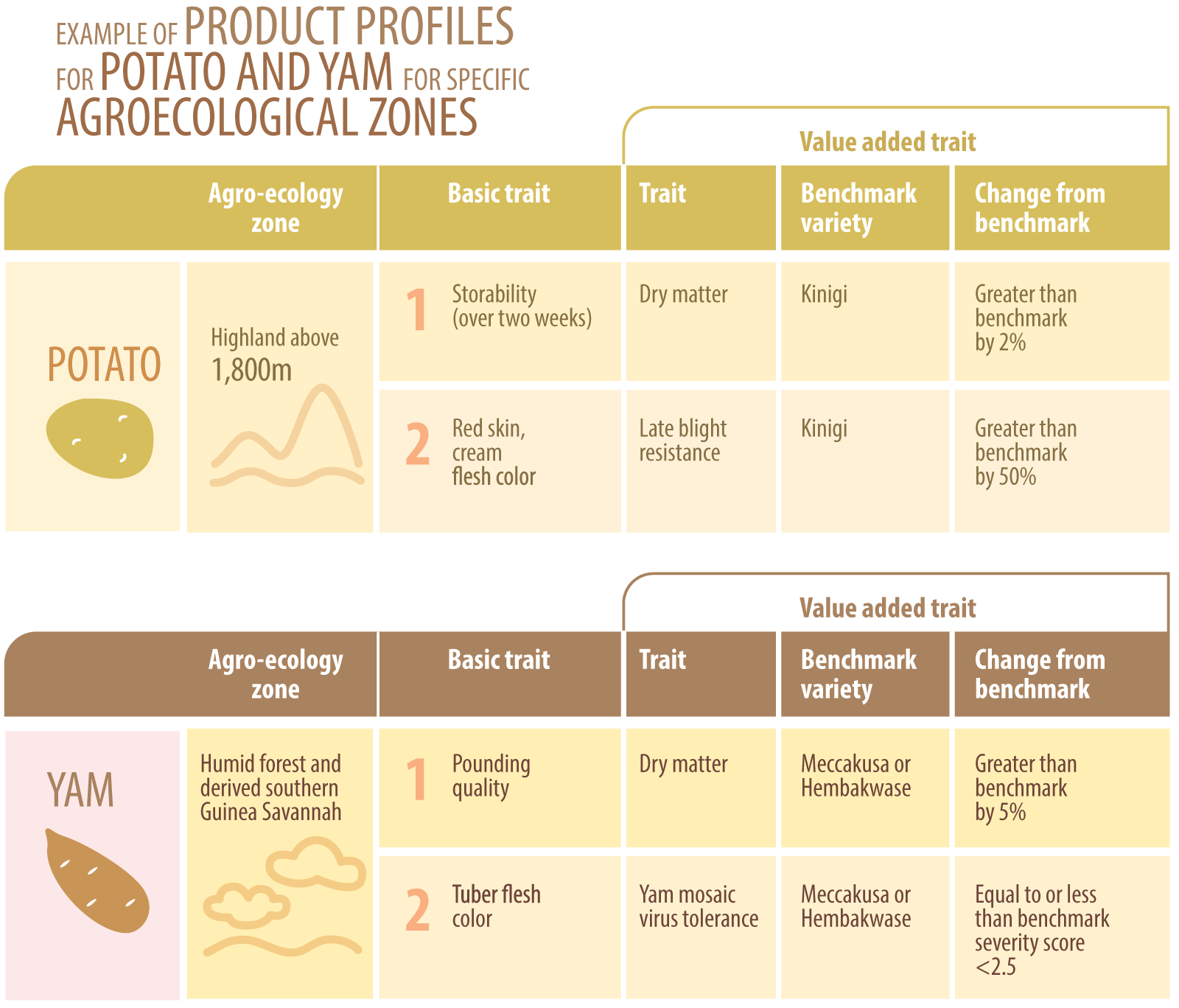[cs_content][cs_section bg_image=”https://annualreport2019.rtb.cgiar.org/wp-content/uploads/2020/09/fp2-top.png” parallax=”false” separator_top_type=”none” separator_top_height=”50px” separator_top_inset=”0px” separator_top_angle_point=”50″ separator_bottom_type=”none” separator_bottom_height=”50px” separator_bottom_inset=”0px” separator_bottom_angle_point=”50″ _order=”0″ _label=”Section 1″ style=”margin: -25px 0px 0px;padding: 0px;background-position: left top;background-size: 100%;”][cs_row inner_container=”true” marginless_columns=”false” bg_color=”transparent” style=”margin: 0px auto;padding: 250px 0px 0px;”][cs_column fade=”false” fade_animation=”in” fade_animation_offset=”45px” fade_duration=”750″ type=”1/1″ style=”padding: 0px 0 0px 0px;”][x_custom_headline level=”h2″ looks_like=”h3″ accent=”false” class=”cs-ta-left” style=”color: rgb(245, 130, 32);margin-top: 0px;”]Spearheading the shift to demand-led breeding[/x_custom_headline][/cs_column][/cs_row][/cs_section][cs_element_section _id=”5″ ][cs_element_layout_row _id=”6″ ][cs_element_layout_column _id=”7″ ][cs_text]
A revolution in the organization of plant breeding is sweeping the CGIAR. RTB is at the forefront, making sure that new approaches and tools fit our crops, including the complexities of breeding and the quality preferences of users. The introduction of product profiles is a key tool in this process. Market experts and social scientists including gender specialists, working closely with the breeders, consult with farmers, consumers, processors and other stakeholders to capture either new or existing traits that will successfully drive variety adoption. These specifications are written up as a prioritized list of traits called a “product profile,” where the product being designed is a future crop variety. The product profile guides breeders in crop improvement and enables stakeholders and management to monitor progress towards delivering that variety.
A revolution is advancing the modernization of CGIAR public breeding programs to meet the twin challenges of climate change and growing populations. This requires increasing potential yields in a way that responds to market demands. Guided by the Excellence in Breeding Platform (EiB), this involves the more focused design of breeding products, better prioritization and mechanisms to manage breeding product pipelines, the use of genomics and other modern tools to accelerate breeding cycles, and digitization of breeding data to enhance accessibility and analysis (see BreeDBase story in Box). Moreover, breeding products must conform to farmer and consumer demands, which is the starting point for developing a new variety. RTB is at the forefront of this revolution, which is critical for our vegetatively propagated crops, with their complex genetic structures, making them more difficult to breed, and the need to incorporate key quality traits for consumer acceptance of new varieties.
[/cs_text][cs_element_image _id=”9″ ][cs_element_text _id=”10″ ][/cs_element_layout_column][/cs_element_layout_row][cs_element_layout_row _id=”11″ ][cs_element_layout_column _id=”12″ ][cs_text]
A key modernization step is the systematic introduction of the product profile tool, which is a prioritized list of traits that an upcoming variety must have, based closely on the drivers of variety adoption. In this manner, the new variety will be designed to meet a demand in a particular market that will make adoption of the variety more likely and hence have an impact on livelihoods. The product profile is jointly designed by the breeder together with market experts and social scientists, including gender specialists, through consultations with relevant stakeholders. Using product profiles at each stage of the breeding process also helps to focus breeding targets, monitor progress and allocate resources. Product profiles are organized like a table, to help chart the design of a new variety, building on the best practice of private seed companies.
Across the CGIAR, the Excellence in Breeding Platform (EiB) is helping breeding programs design their product profiles. So far, breeding teams in RTB have uploaded nearly 50 product profiles to the EiB online database. The table (below) shows a couple of examples. Each line is a variety under development that responds to a particular and important need of a given sector of farmers, processors, and/or consumers. After consultations, desired traits are listed in columns as basic traits of an existing variety, or “value added” traits needed in a future variety. A simplified example, showing a couple of traits, is given for draft product profiles for potato and for yam for specific agroecologies where particular popular local varieties are missing important traits. One key user trait is the poundability of the yam for traditional consumption recipes; this is a complex quality trait to breed for, and it needs to be retained as virus resistance is incorporated. Each proposed new variety has to outperform the local benchmark variety in each of the key traits.
However, vegetatively propagated crops such as roots, tubers and bananas are unlike other crops, so the standardized templates shared by the EiB need to be adjusted to better define and prioritize traits related to product quality, for example, poundability in yam. The RTB Breeding Community of Practice convenes RTB plant breeders, including NARS partner breeding programs, to review and improve product profiles. For example, sweetpotato breeder Solomon Afuape of the National Root Crops Research Institute (NRCRI) at Umudike, Nigeria, was looking to breed a new variety that was better than the popular variety Ex-Ibgariam, which had good quality traits, but did not have good virus resistance nor drought tolerance. In consultation with various stakeholders, including extension agents, food scientists and economists, Afuape was able to develop the product profile where the basic and value-added traits to be incorporated were refined and better defined. Therefore, the basic traits of the Ex-Ibgariam sweetpotato were outlined as good storability, attractive oblong shape and canopy closing by six to eight weeks. The value-added trait was prioritized to include drought tolerance, and an additional 10% more yield than Ex-Ibgariam under drought conditions.
[/cs_text][/cs_element_layout_column][/cs_element_layout_row][cs_element_layout_row _id=”14″ ][cs_element_layout_column _id=”15″ ][cs_element_icon _id=”16″ ][cs_element_quote _id=”17″ ][cs_element_icon _id=”18″ ][/cs_element_layout_column][/cs_element_layout_row][cs_element_layout_row _id=”19″ ][cs_element_layout_column _id=”20″ ][cs_text]
Moreover, RTB has led the Gender and Breeding Initiative where a tool to query if each trait in the product profile has a potential gender impact (positive or negative) was developed and is now being piloted together with the EiB in the adjustment of product profiles across the CGIAR.
As a next step in the breeding revolution, a hackathon is being planned by the RTB Breeding Community of Practice to share and improve product profiles and lessons about how to integrate stakeholder feedback.
[/cs_text][cs_element_image _id=”22″ ][/cs_element_layout_column][/cs_element_layout_row][/cs_element_section][cs_section bg_color=”transparent” parallax=”false” separator_top_type=”none” separator_top_height=”50px” separator_top_inset=”0px” separator_top_angle_point=”50″ separator_bottom_type=”none” separator_bottom_height=”50px” separator_bottom_inset=”0px” separator_bottom_angle_point=”50″ _label=”Section 2″ style=”margin: 0px;padding: 30px 0px 45px;background-size: 100%;background-position: top;”][cs_row inner_container=”true” marginless_columns=”false” style=”margin: 0px auto;padding: 0px;”][cs_column fade=”false” fade_animation=”in” fade_animation_offset=”45px” fade_duration=”750″ type=”1/1″ style=”padding: 0px 0 0px 0px;”][x_share title=”SHARE THIS” share_title=”” facebook=”true” twitter=”true” google_plus=”false” linkedin=”true” pinterest=”false” reddit=”false” email=”true” email_subject=””][/cs_column][/cs_row][/cs_section][/cs_content][cs_content_seo]Spearheading the shift to demand-led breeding
A revolution in the organization of plant breeding is sweeping the CGIAR. RTB is at the forefront, making sure that new approaches and tools fit our crops, including the complexities of breeding and the quality preferences of users. The introduction of product profiles is a key tool in this process. Market experts and social scientists including gender specialists, working closely with the breeders, consult with farmers, consumers, processors and other stakeholders to capture either new or existing traits that will successfully drive variety adoption. These specifications are written up as a prioritized list of traits called a “product profile,” where the product being designed is a future crop variety. The product profile guides breeders in crop improvement and enables stakeholders and management to monitor progress towards delivering that variety.
A revolution is advancing the modernization of CGIAR public breeding programs to meet the twin challenges of climate change and growing populations. This requires increasing potential yields in a way that responds to market demands. Guided by the Excellence in Breeding Platform (EiB), this involves the more focused design of breeding products, better prioritization and mechanisms to manage breeding product pipelines, the use of genomics and other modern tools to accelerate breeding cycles, and digitization of breeding data to enhance accessibility and analysis (see BreeDBase story in Box). Moreover, breeding products must conform to farmer and consumer demands, which is the starting point for developing a new variety. RTB is at the forefront of this revolution, which is critical for our vegetatively propagated crops, with their complex genetic structures, making them more difficult to breed, and the need to incorporate key quality traits for consumer acceptance of new varieties.
Cu Thi Le Thuy with Alliance Bioversity-CIAT selects materials with potential resistance to cassava mosaic disease. G. Thiele (RTB)
A key modernization step is the systematic introduction of the product profile tool, which is a prioritized list of traits that an upcoming variety must have, based closely on the drivers of variety adoption. In this manner, the new variety will be designed to meet a demand in a particular market that will make adoption of the variety more likely and hence have an impact on livelihoods. The product profile is jointly designed by the breeder together with market experts and social scientists, including gender specialists, through consultations with relevant stakeholders. Using product profiles at each stage of the breeding process also helps to focus breeding targets, monitor progress and allocate resources. Product profiles are organized like a table, to help chart the design of a new variety, building on the best practice of private seed companies.
Across the CGIAR, the Excellence in Breeding Platform (EiB) is helping breeding programs design their product profiles. So far, breeding teams in RTB have uploaded nearly 50 product profiles to the EiB online database. The table (below) shows a couple of examples. Each line is a variety under development that responds to a particular and important need of a given sector of farmers, processors, and/or consumers. After consultations, desired traits are listed in columns as basic traits of an existing variety, or “value added” traits needed in a future variety. A simplified example, showing a couple of traits, is given for draft product profiles for potato and for yam for specific agroecologies where particular popular local varieties are missing important traits. One key user trait is the poundability of the yam for traditional consumption recipes; this is a complex quality trait to breed for, and it needs to be retained as virus resistance is incorporated. Each proposed new variety has to outperform the local benchmark variety in each of the key traits.
However, vegetatively propagated crops such as roots, tubers and bananas are unlike other crops, so the standardized templates shared by the EiB need to be adjusted to better define and prioritize traits related to product quality, for example, poundability in yam. The RTB Breeding Community of Practice convenes RTB plant breeders, including NARS partner breeding programs, to review and improve product profiles. For example, sweetpotato breeder Solomon Afuape of the National Root Crops Research Institute (NRCRI) at Umudike, Nigeria, was looking to breed a new variety that was better than the popular variety Ex-Ibgariam, which had good quality traits, but did not have good virus resistance nor drought tolerance. In consultation with various stakeholders, including extension agents, food scientists and economists, Afuape was able to develop the product profile where the basic and value-added traits to be incorporated were refined and better defined. Therefore, the basic traits of the Ex-Ibgariam sweetpotato were outlined as good storability, attractive oblong shape and canopy closing by six to eight weeks. The value-added trait was prioritized to include drought tolerance, and an additional 10% more yield than Ex-Ibgariam under drought conditions.
The point is that the people who develop targets for new varieties are not only breeders; they are also users and other stakeholders, says Edward “Ted” Carey, a sweetpotato breeder with CIP in Ghana.
Moreover, RTB has led the Gender and Breeding Initiative where a tool to query if each trait in the product profile has a potential gender impact (positive or negative) was developed and is now being piloted together with the EiB in the adjustment of product profiles across the CGIAR.
As a next step in the breeding revolution, a hackathon is being planned by the RTB Breeding Community of Practice to share and improve product profiles and lessons about how to integrate stakeholder feedback.
SHARE THIS
 [/cs_content_seo]
[/cs_content_seo]